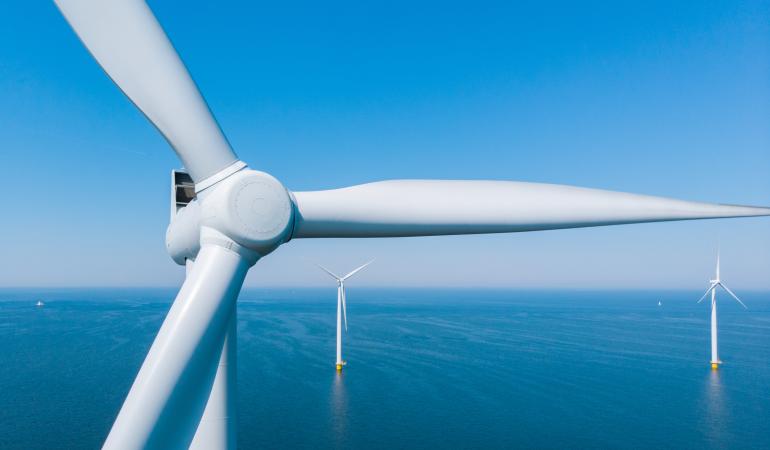
More and more wind turbines are being installed in the North Sea. These turbines need to be protected against corrosion (such as rust). Ways to do this include using specific metals or epoxy coatings. RIVM has calculated whether this could be harmful to humans and the environment in a worst-case scenario. What is certain is that the use of the specific metals is not harmful. However, epoxy coatings can indeed be harmful. At present, it is unknown whether these coatings are actually being used. In addition, plastic may be released due to wear and tear of turbine blades. Knowledge about this is currently limited. RIVM estimates that less plastic is released from wind turbines than from other sources, such as the Dutch shipping industry. RIVM recommends using coatings on new wind turbines that cause little to no release of hazardous substances.
Number of offshore turbines on the rise
Wind energy plays an important role in the energy transition. The Netherlands is aiming to generate 21 GW with offshore wind turbines by 2030. At the moment, this figure is 2.45 GW. Even after 2030, capacity will continue to grow to a maximum of 72 GW in 2050. Many more offshore wind farms are needed to achieve this.
There are also plans for nature development or mussel farming on the site of the wind farms. It is therefore important to know whether harmful substances could be released from wind turbines. RIVM has carried out a risk assessment for two corrosion protection measures and for plastics released as turbine blades wear out.
Little information from practice
RIVM did not find an answer to the question of whether and at which Dutch offshore wind farms metals and epoxy coatings are being used. To calculate the harmful effects anyway, RIVM assumed the (imaginary) situation that these products are indeed being used. In addition, to avoid underestimating the effects, RIVM assumed the worst-case quantity of substances that could be released. For turbine blade wear, RIVM made a rough estimate based on information from manufacturers and scientific literature.
Harmful effects of coatings cannot be ruled out
What is certain is that the use of specific metals to protect the turbine does no harm to humans and the environment. However, the use of epoxy coatings may be harmful. Whether this is actually the case in practice depends largely on the coatings used. The amounts and types of substances released can vary greatly from one coating to the next. There is no overview of the coatings used on Dutch wind turbines. For this reason, harmful effects cannot be ruled out in advance.
Less plastic than from other sources
RIVM estimates that 2 to 38,000 kg of plastic will end up in the sea by 2030 due to turbine blade wear. The maximum estimate is lower than the amount from other sources, such as the Dutch shipping industry. New techniques could reduce wear and tear. How much plastic will be released will depend on the technique used.
Recommendations
It is important to obtain a clearer picture of the coatings on wind turbines currently at sea. RIVM also recommends ensuring that coatings on new wind turbines contain as few hazardous substances as possible. There are alternatives to epoxy coatings. To reduce the amount of plastic released during turbine blade wear, RIVM recommends using techniques that prevent wear as much as possible.
Commissioning client
This study was commissioned by the Dutch State Supervision of Mines (SSM). It is a follow-up to a quick scan from 2022. The areas of concern identified at that time have been examined further in this study.